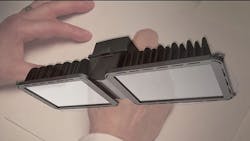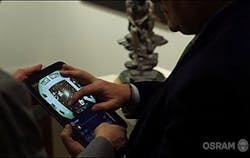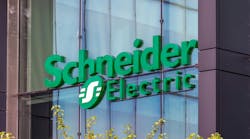Smart LED Lighting Solutions Wow Attendees at Lightfair 2015 in Big Apple
Smart lighting customized for the user experience was the key theme shaping many of the new LED lamps, fixtures and controls in 500-plus booths at the 2015 Lightfair International trade show and conference, held this week at the newly refurbished Jacob Javits Convention Center in New York.
Smart lighting solutions that users can program and schedule remotely with smartphones and tablets with an infinite variety of colors, lighting scenes and schedules is the latest phase of development of LED lamps, which are fast replacing traditional lighting solutions such as incandescent, fluorescent, HID (high-intensity discharge), metal-halide, halogen and high-pressure sodium in virtually all lighting applications.
Long-time attendees of Lightfair have seen this transformation sweep through the miles of aisles of booths and in the subject matter of hundreds of educational seminars over the years in several distinct waves. LEDs 1.0 first came into the lighting market decades ago as an energy-efficient option limited to red or green light for exit signs and traffic lights. Led by companies like Color Kinetics (now owned by Philips Lighting), LEDs 2.0, got their first rave reviews in the theater and entertainment about 15 years ago for their seemingly limitless color palette of controllable colors, and in LEDs 3.0, over the past decade we started seeing LED replacement options for screw-in incandescents, metal-halide and halogen lamps and a few years later as replacements for fluorescent lighting.
In LED 4.0, about five years ago you started seeing LED products for warehouses, parking garages and high-bay industrial applications being launched at Lightfair that provided an attractive return on investment because they didn’t have to be replaced as often. Around the same time, in LEDs 5.0, you started seeing a forest of streetlights and fixtures for parks, parking lots, walkways and other outdoor applications in Lightfair’s booths.
At Lightfair 2014 in Las Vegas and at this year’s show in the Big Apple, two newer trends are creating lots of buzz on the show floor. In LEDs 6.0, dozens of lighting manufacturers are showcasing new ways to remotely control, program and monitor LEDs to create exactly what color they want, when and where they want it from a single LED light source. As an example, there has been lots of talk over the years about the impact of different colored lights on our moods, and more LED manufacturers are offering single LEDs that can be programmed to offer white/blue light in the mornings when we want wake up and be alert for the day, and then warm, calming, amber tones at night when we want to reset our body clocks for sleep.
LEDs 7.0 is in some ways the most fascinating of all. Led by companies like Sensity, lighting developers are re-imagining light fixtures as the new homes for a fascinating variety of new applications, including security, video, audio and WiFi. These developers are taking advantage of the simple fact that LEDs and solid-state lighting are controlled wirelessly over the internet via IP (internet protocol) addresses, and they are developing ways for these new applications to piggyback on that same node.
Real-world applications are already in place utilizing these new fixtures in the Smart City movement. Cities are relying on light fixtures to not only provide security lighting but to offer video surveillance, public announcements, free public WiFi and even weather reports on road conditions. Simon Property Group, one of the largest commercial property developers in the United States, is even working on a pilot project with Sensity that will use video cameras in lighting fixtures to monitor the pavement conditions in mall parking lots so they can provide inexpensive basic maintenance when needed instead of being whacked for expensive paving jobs if they wait too long.
Seen and heard on the show floor. Lightfair returned to the Javits Center for the first time in several years while the facility was closed for expansion and maintenance. Many attendees joked that it looked like the same old Javits Center, right down to what seemed like an antiquated non-LED lighting system in the main halls… The new facility does have free public WiFi, but the lack of receptacles for those all-important recharging moments for smartphones, tablets and the like is very 1980s.
Tons of new construction right around the Javits Convention Center now, including the first signs of the zillion-dollar Hudson Yards project, which will bring thousands of upscale apartments and related retail and commercial construction to Manhattan’s West Side… Next year’s Lightfair will be in sunny San Diego from April 26-28.



